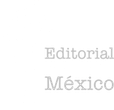
The teacher and friend of Henry David Thoreau (Concord, Massachusetts, from 1817 to 1862), Ralph Waldo Emerson said that books are to be written and that nature is to be described. Surely Thoreau - "school teacher, private tutor, surveyor, gardener, farmer, painter (houses), carpenter, bricklayer, laborer, manufacturer of pencils and sandpaper, writer and sometimes poetastro" - which was student at Harvard University, where Emerson delivered his lecture on "the American Scholar" (the American Scholar), he did not need to hear that provocation to carry out his work, whose titles (A Week on the Concord and Merrimack Rivers , 1849, Walden, 1854, The Maine Woods, 1864, Cape Cod, 1865) the obvious role of nature and in whose pages the art of writing occupies the privileged position he acquired in his Journal (1837-1861) . The Journal of Thoreau was the raw material from which you draw your finished texts, but it is likely that the author was particularly satisfied that recent mark, or raw art, from which we extracted the most part, like gems, fragments that make up the anthology Writing. These are, literally and figuratively, the reflections of an ongoing effort to record the "candid moments" of his life and thought, and are, so to speak, a site of the most precious of what Thoreau mean: something capable of awakening the reader's awareness of what it means to be adjacent to the nature and tongue creature.
Antonio Casado da Rocha has translated several essays and is the author of Thoreau's civil disobedience from Thoreau (Gakoa, 2002) and Thoreau (Watercolour 2005) biography. Their biobibliográficos data are available on the website. Javier Antonio Lastra Alcoriza and PhDs in Philosophy and co-directors of The Viceroy Tower. Journal of Cultural Studies. They have published and jointly translated Walden (Chair, 2005), by Henry David Thoreau, and The Conduct of Life (Pre-Textos, 2004), Nature and other early writings (New Library, 2008) and Representative Men (Chair, 2008 ) by Ralph Waldo





